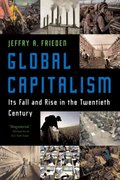Work out the following
Part 2 Consider the endogenous growth model in which time can be used for work (it) or human capital accumulation (1 15). Output is produced according to Y = zuH, where z is total factor productivity and H is the current stock of human capital. The future human capital stock is given by H ' = M] u)H, where 5 represents eiciency in producing new human capital. The initial (current) human capital stock is H = 100. The economy is characterized by the following parameters: b = 6.1, 2 = 15, and u = 0.83. (a) Calculate future human capital (H '), and the growth rate of human capital. (b) Calculate current output (Y), future output (1\"), and the growth rate of output. How does it compare to the growth rate of human capital? (c) Suppose the government cuts technology funding for education, and as a result b declines to b = 6.0. Calculate the growth rate of output following this change. ((1) Are the growth rates you found in parts a and c the same or different? Explain intuitively why this policy change did or did not a'ect the economy's growth rate. (e) Explain how the decrease in b will affect (if at all) the current levels of human capital, output, and consumption: H, Y, and C. If there is no effect, explain why. (f) Explain how the decrease in b will affect (if at all) the future levels of human capital, output, and consumption: H', Y' , and C' . If there is no effect, explain why. (g) Explain how the decrease in b will affect the growth rates of human capital, output, and consumption. If there is no effect, explain why. (h) Draw a graph of logoutput, ln'), over time for this economy and illustrate how the decrease in b affects current and future output. Surrounding the Great Lake are four paper-mills, each producing 100 tons of paper per year. The paper is sold on the national market for $2 per ton, and including all the costs of production, costs for each firm are $1 per ton. Thus each firm earns a pure economic profit of $1 per ton. These paper mills require fresh water to operate, and also produce a pollutant called gunk, which they dump into the Great Lake. New paper mills can also locate on the Great Lake, and produce at a base cost of $1 per ton. However, for each new paper mill which arrives, the water will become more polluted with gunk, and each firm will have to install a water treatment facility to obtain fresh water. This externality associated with new plants will raise the costs of paper production at all facilities, including the new one, by $.15 per ton for each new mill. 1. Assume there is free access to the Great Lake. If paper mills will continue to locate as long as their is any economic profit to be earned, how many new mills will be built? What is the number of mills that maximizes total combined profits for the paper producers? (Hint: Average revenue remains constant at $2. Create a table which compares average revenues with average and marginal costs as new firms locate around the lake.) 2. Draw a diagram of the marginal cost and marginal revenue curves with the number of mills on the horizontal axis. Assume that government regulation restricts lake access to the profit-maximizing number of firms. Show the resource rent that would be earned by the mills which are allowed to operate. 3. Suppose that government regulation reduced the number of mills by one from the number that would have resulted given free access. Show that the increase in profits to the remaining firms (the resource rent) is sufficient to compensate the firm that is denied access its lost profits.QUESTION 3 (6 points) A good answer will note that these corporate raiders will be maximizing profits if the market interest rate is greater than the rate of growth of the natural resource (like the fisheries example in the appendix to chapter 3.) The government should act if society decides that the pursuit of sustainability dominates the interests of the private landowner. QUESTION 4 (12 points - each sub-question worth 4 points) Application 4.2: More on Efficient Smoking (Analytical, 1) These smoking problems are a little silly but are good at illustrating some basic lessons about efficiency. So, this time, Groucho and Harpo work together in the same office. Groucho smokes; Harpo hates smoke. Groucho currently smokes 12 cigars per day. He faces marginal costs of reducing smoking (withdrawal pains) equal to $x, where x is the number of cigars reduced. In other words, the cost of giving up the first cigar is $1, the second, $2, etc.Harpo receives marginal benefits (reduced discomfort and risk of cancer) equal to $(12-x) from reducing the number of cigars smoked. It is possible to rent a Clean-Air Machine that reduces smoke in the air by 50% for $10 per day. It is also possible to relocate Groucho in a different office so Harpo would not have to breathe any smoke at all for $40 per day. 1. Draw a diagram showing the marginal costs and marginal benefits of pollution reduction, with the number of cigars reduced on the horizontal axis. Use this diagram to determine the efficient number of cigars reduced if there is no machine rental or relocation allowed. 2. Suppose that the clean air machine is installed. What is the efficient number of cigars reduced now? 3. Groucho is smoking 12 cigars a day. Is it more efficient to rent the machine or relocate Groucho to another room? 4. This problem has no transactions costs or free-riding. The Coase theorem says that, in this kind of simple example, the efficient outcome should be achieved through negotiation even if Harpo has the power to banish Groucho to another office at Groucho's expense. Explain why









